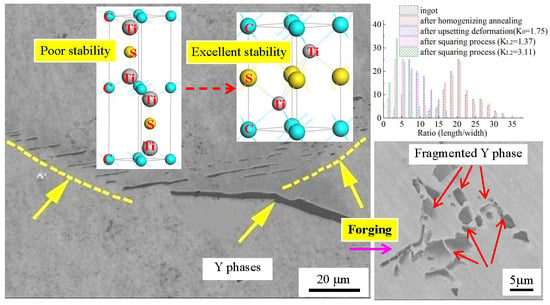Structural Properties and Phase Stability of Primary Y Phase (Ti2SC) in Ti-Stabilized Stainless Steel from Experiments and First Principles
Abstract
Share and Cite
Zhao, D.; Zhou, Y.; Fan, J.; Liu, T.; Nie, Y.; Fu, W.; Lv, Z. Structural Properties and Phase Stability of Primary Y Phase (Ti2SC) in Ti-Stabilized Stainless Steel from Experiments and First Principles. Materials 2019, 12, 1118. https://doi.org/10.3390/ma12071118
Zhao D, Zhou Y, Fan J, Liu T, Nie Y, Fu W, Lv Z. Structural Properties and Phase Stability of Primary Y Phase (Ti2SC) in Ti-Stabilized Stainless Steel from Experiments and First Principles. Materials. 2019; 12(7):1118. https://doi.org/10.3390/ma12071118
Chicago/Turabian StyleZhao, Deli, Yu Zhou, Jiangyu Fan, Tianyu Liu, Yihong Nie, Wantang Fu, and Zhiqing Lv. 2019. "Structural Properties and Phase Stability of Primary Y Phase (Ti2SC) in Ti-Stabilized Stainless Steel from Experiments and First Principles" Materials 12, no. 7: 1118. https://doi.org/10.3390/ma12071118
APA StyleZhao, D., Zhou, Y., Fan, J., Liu, T., Nie, Y., Fu, W., & Lv, Z. (2019). Structural Properties and Phase Stability of Primary Y Phase (Ti2SC) in Ti-Stabilized Stainless Steel from Experiments and First Principles. Materials, 12(7), 1118. https://doi.org/10.3390/ma12071118




